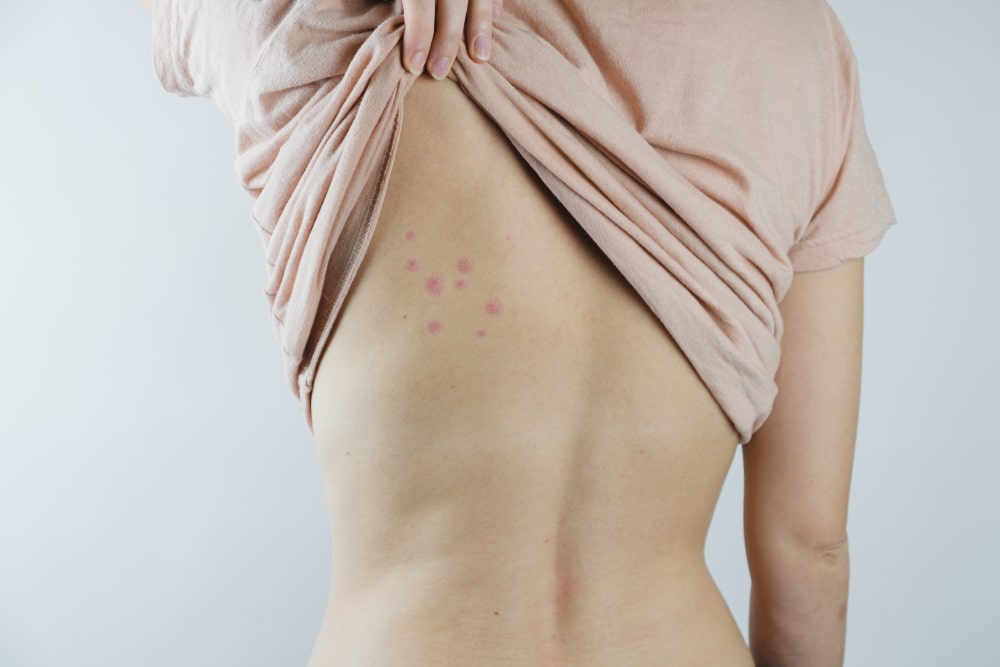Bed Bugs
Bed Bug Treatments
There has been a significant increase in bed bugs in the last 2 years with more and more infestations requiring professional treatment. If you have spent any time travelling, staying in hotels or any type of accommodation where there are several guests staying overnight, then you may have come across bed bugs and accidentally brought them into your home.
Bed bugs and their eggs can also be transported in second hand furniture. Previously associated with uncleanliness, this is not the case anymore as bed bugs will make their home anywhere…clean or not!
Early detection is crucial when it comes to treating these pests as they can easily travel from room to room or between floors in hotels or apartments.
Bed bugs predominantly come alive at night and survive off the blood of humans and animals which is why they are found close to where people sleep or rest for long periods of time. A bed bug can take up to six times its weight in blood at a time, usually, people are not aware they are being bitten as bed bugs inject a natural aesthetic while feeding, however, bites can be very irritating and allergic reactions are common.

It can be difficult to tell bed bug bites from other types of insect bites however symptoms include redness, itching, swelling or blistering which can appear on your body in clusters or rough lines. Bed bugs don’t generally climb on our bodies, rather they crawl along bedding until they come into contact with skin. The only real way to identify if bed bugs are the cause of your bites is to check your bed for small dark spots or black stains which is their faecal matter. You may also notice a sweet sickly smell and small blood spots. Bites can occur anywhere on the body but are often on the neck, hands, arms or legs where there are blood vessels.
Bed bugs are approximately 5 mm in length, 7mm after feeding and are a flat oval shape with pointed mouths for piercing and sucking. While eggs start as a cream colour, they darken the closer they get to hatching. Depending on the stage they are at in their lifecycle, their colour can vary from yellow to brown and a reddish brown after they have fed. Bed bugs don’t have wings and can be found in folds of mattresses or sofas as well as bed frames and headboards, carpets, light switches, behind peeling paint or wallpaper and under picture frames.
The female bed bug lays between 3 and 10 eggs a day depending on the availability of food and eggs usually take 6 to 12 days to mature, the warmer the environment the earlier they hatch. Females live for approximately 2 months depending on conditions, and she will produce 300-500 eggs in her lifetime.
Do bed bugs carry disease?
No, bed bugs are not known to carry any infectious diseases.
Will they attached themselves to myself or my pet?
Only through the feeding process which takes up to 10 minutes. After that bed bugs prefer to go back to their hiding space to digest.
Can I catch bed bugs from public transport?
In rare cases, yes. They can be transferred on clothes or in bags so if an unsuspecting person wears an item of clothing that has been exposed to bud bugs they can easily transfer this to a seat on a train or a bus.
Can bed bugs survive outside?
Unlike other insects, bed bugs can survive exposed to the elements however they will die outdoors in freezing cold conditions or at temperatures over 45c, however this process can take a long time and they can survive up to 5 months without blood food, they are pretty resilient.
How do I prevent Bed Bugs from coming to my home?
When you return from holidays empty your suitcase either outside. Thoroughly inspect all areas of your luggage for any bed bugs and their eggs. Ensure you wash all items of clothing on a temperature of 60 c. Carry out a thorough inspection of any second-hand furniture before purchasing or bringing into your home.
How do bed bugs spread?
Bed bugs don’t fly or jump but they are good climbers so keeping your room clutter free and make sure all bedding is not touching the floor. Moving your bed slightly away from the wall can also help.
Smooth porcelain or glass surfaces make it impossible for bed bugs to travel any distance however carpet or timber floors as well as textured surface including on walls makes it easier for bed bugs to spread. Bed bugs are master hiders so any eggs or bugs hiding in clothes, linen, towels or boxes that are taken between rooms will aid in them spreading.
Can I treat bug bugs myself?
You may be able to get rid of some or the bulk of bed bugs if you are extremely vigilant, however, without the help of a qualified and licenced technician, eggs and bugs may still remain and will continue to breed. We use a targeted chemical and a specially designed powerful vacuum with HEPA filter and powerful motor to safety eliminate both live and dead bugs along with their eggs. Getting rid of bed bugs is a combined effort from you and CTS. To stop the breeding process we must delete all conducive areas that bed bugs thrive in. We will need your help by decluttering the infested room and washing clothes, linen, towels plus any items that have come into contact with bed bugs at 60c for 20 mins. Items that cannot be washed however can go into the drier on a high heat, will also help with killing the bugs and eggs.
Nathan and the team always do a fantastic job, highly recommend for all your pest control needs.
